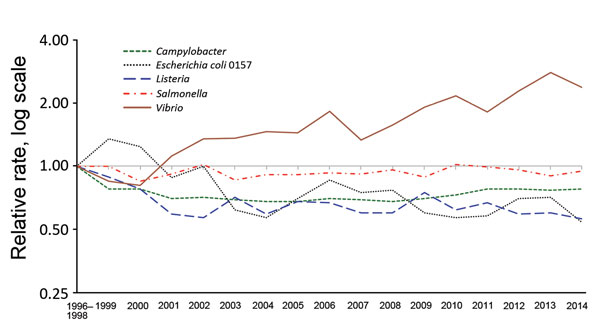Volume 21, Number 9—September 2015
THEME ISSUE
Emerging Infections Program
Emerging Infections Program
Foodborne Diseases Active Surveillance Network—2 Decades of Achievements, 1996–2015
Figure 2

Figure 2. Relative rates of culture-confirmed infections with Campylobacter, Escherichia coli O157, Listeria, Salmonella, Vibrio, and Yersinia compared with 1996–1998 rates, Foodborne Diseases Active Surveillance Network, United States, 1996–2014. The position of each line indicates the relative change in the incidence of that pathogen compared with 1996–1998. The actual incidences of these infections cannot be determined from this graph. Data for 2014 are preliminary.
Page created: August 12, 2015
Page updated: August 12, 2015
Page reviewed: August 12, 2015
The conclusions, findings, and opinions expressed by authors contributing to this journal do not necessarily reflect the official position of the U.S. Department of Health and Human Services, the Public Health Service, the Centers for Disease Control and Prevention, or the authors' affiliated institutions. Use of trade names is for identification only and does not imply endorsement by any of the groups named above.